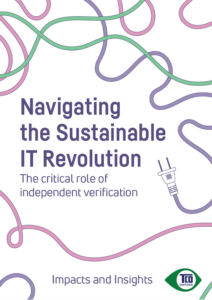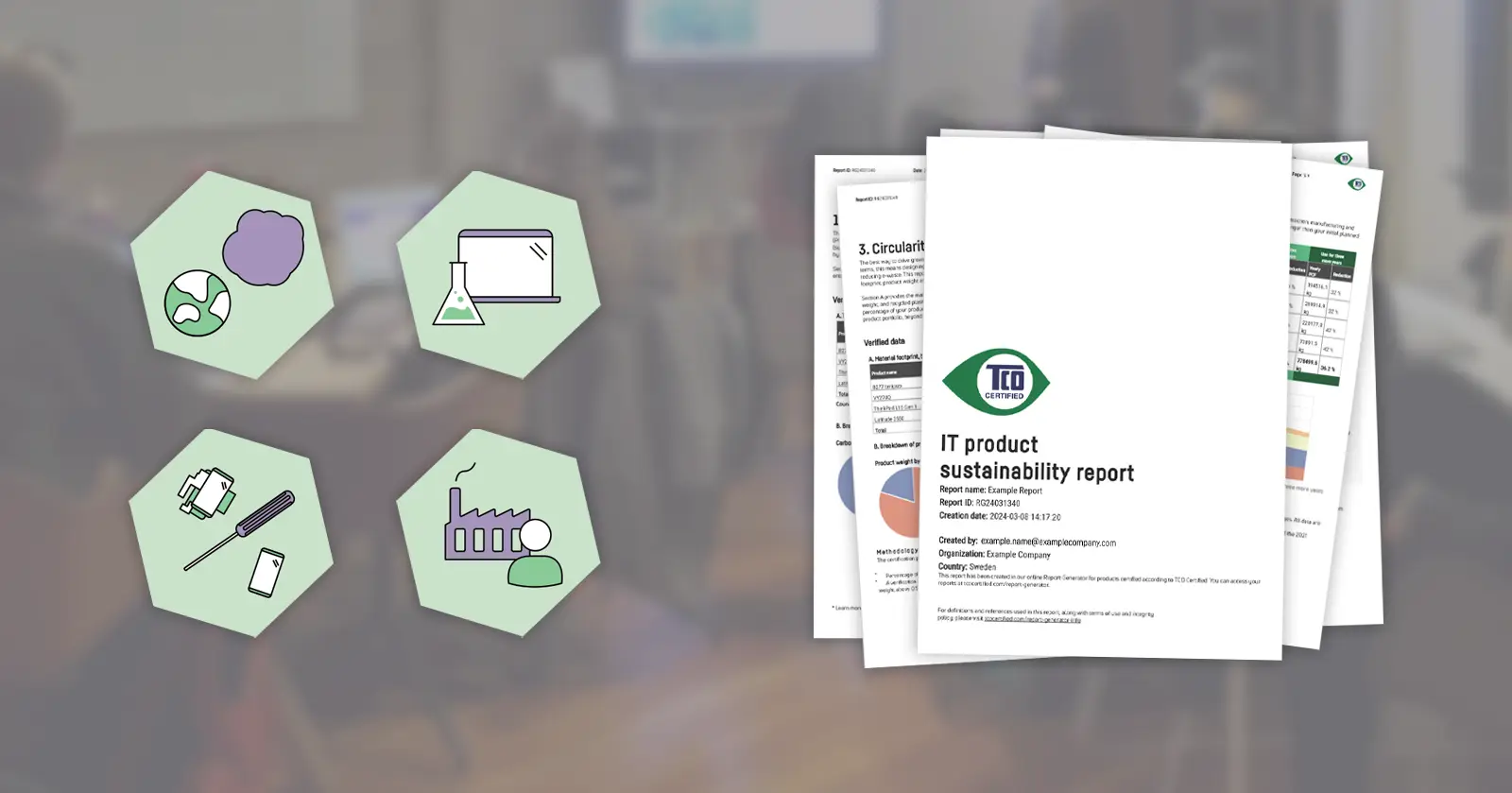Ecolabels and certifications can make sustainable procurement a lot easier. However, the market for ecolabels is both extensive and varied. As we have seen, it is important for purchasers to know the differences. Here’s three questions that will help you select an ecolabel that has the capacity of making the impact you aim for.
As a purchaser, you don’t need to know everything yourself to be strategic and successful in sustainable procurement. TCO Certified and other robust ecolabels do all the heavy lifting for you, allowing you to stay ahead, especially when legislation is lagging. But as we explain in this report, while some ecolabels include a robust system of verification, follow-up and accountability, others base product compliance on self declarations and unverified product claims. There are common pitfalls with ecolabels that risk putting you in the greenwash or bluewash trap.
These three questions will help you evaluate ecolabels, to decide which one you want to rely on in procurement.
1. Does it include up-to-date environmental and social sustainability criteria?
- Multi-attribute criteria, covering environmental, social and governance aspects (ESG)
- Criteria rigorous enough to make a measurable impact beyond legal requirements
- Science-based criteria, with clear testing thresholds and without loopholes
- Circularity criteria, demanding products are durable, repairable and upgradeable
- Supply chain responsibility criteria that include all ILO Core Conventions and require independent factory audits
- The same criteria apply globally
- All criteria are mandatory
If the answer is yes, you have chosen an ecolabel with effective, up-to-date, verifiable criteria that are relevant across all sustainability dimensions, tough enough to make a difference, without loopholes.
If the answer is no, keep searching. Don’t choose an ecolabel with outdated, irrelevant or optional criteria that opens up for own interpretations, or loopholes. Criteria that are difficult to measure and verify lead to low sustainability benefits, and unfair competition in procurement.
2. Does it include mandatory independent verification of compliance?
- Verification carried out by an independent party — not brands, manufacturers or anyone representing their interests
- Verification is mandatory every time, with no exceptions
- Verification is mandatory for all criteria
- Verification includes both the product and the supply chain, especially worker impact
- You as a purchaser have access to proof of compliance
If the answer is yes, you have chosen an ecolabel that significantly reduces your sustainability risk and reputational consequences of non-conformities in products and supply chains. Claims have been verified by an independent party, reducing your risk of being accused of greenwashing or bluewashing.
If the answer is no, keep searching. Don’t choose an ecolabel that does not allow you to credibly report sustainability progress. Without independent verification, you must admit that you trust industry declarations. You can be held responsible if false claims are revealed.
3. Does it include a system of industry accountability and consequences?
- A system of continued monitoring is in place, for the product and the supply chain
- Reported impact and data are traceable back to an independent test report
- A corrective action system is in place to ensure that non-conformities are corrected
- There are consequences in place if non-conformities are not corrected within the agreed time frame
- The ecolabel or certificate is withdrawn for products are persistently non-compliant
If the answer is yes, you have chosen an ecolabel that effectively eliminates your risk of purchasing non-compliant products, as they do not retain the ecolabel. It allows you as a purchaser to monitor, evaluate and report progress while holding your vendors accountable.
If the answer is no, keep searching. Don’t choose an ecolabel that forces you to rely on brand owners and factory management to ensure that improvements are made, without proof of continuous compliance. You would have no way of knowing if found non-conformities remain unsolved.





